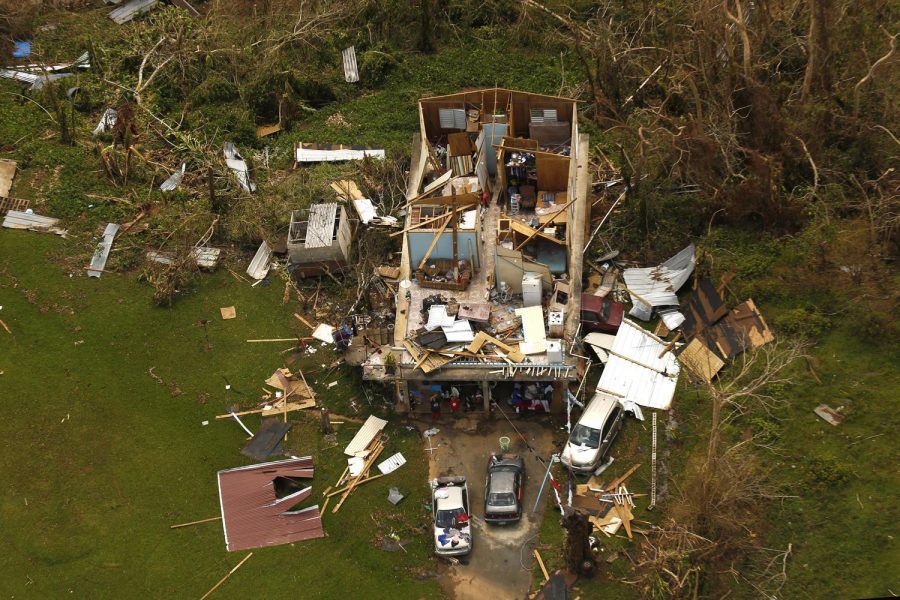UI student’s family affected by Hurricane Maria
Just one example of the devastation caused by hurricane Maria, shown on Sept. 25, 2017. Gabriel Sierra, sophomore in Engineering, said his family was spared extreme damage to their home, noting that flooding and trees being uprooted occurred.
October 12, 2017
Gabriel Sierra’s life changed when Hurricane Maria hit his home on Sept. 20.
“It never hits us, so I literally was not expecting it to hit us. This time it actually happened,” Sierra, sophomore in Engineering, said.
According to the World Vision Organization, Hurricane Maria was the strongest hurricane to hit Puerto Rico in more than 80 years. Hurricane Maria barreled through Puerto Rico as a Category 4 storm with winds up to 155 mph.
Sierra said Puerto Rico normally receives a hurricane warning every year. He said he used to say that they live in a “bubble” because the announced hurricane would never actually amount to anything. That was not the case this time.
When Sierra was first made aware of the hurricane, his mom sent him videos from his house in Cupey, San Juan.
Get The Daily Illini in your inbox!
“At first cell reception wasn’t bad. She sent a video of the light switches and since the water wasn’t being drained (fast enough) it started coming out of the light switches. I had never seen something like that,” he said.
Sierra said he did not realize the extent of the damage until after the hurricane. Due to the bad cellphone reception around his house, Sierra said his parents had very little access to the internet.
“They barely have access to news. They don’t know what’s going on. It’s crazy that when they call me I am the one updating them on how Puerto Rico is,” Sierra said.
Fortunately, Sierra said the damage his house sustained was not as bad as it could have been, compared to the rest of Puerto Rico. Some of the damage to his house included minor flooding and uprooted trees relocating to his backyard.
Robert Olshansky, professor of urban and regional planning, said “the long-term recovery will take several years, and it is closely connected to other long-term issues. Basic investment in infrastructure needs to be made, but someone needs to agree to pay for it.”
Olshansky said because Puerto Rico is a U.S. territory and many people can move freely to the mainland, that many are relocating to Miami rather than waiting for the damage to be repaired.
In spite of the fact that many people are migrating to Miami, Sierra expects to go back to his home in Puerto Rico.
“I don’t know what I’ll see when I go back in December. Hopefully it will be better, but I don’t know what to expect,” he said.
The main thing Sierra wants people to learn from this is that the struggle Puerto Rico is going through is still happening. Although the media has changed its focus to other things, he wants people to remember that Puerto Rico is still suffering.
Sierra said he wants students on campus to be more aware of what they can do to help the cause while on campus.
Puerto Rico Rises, a nonprofit organization aimed at helping the island of Puerto Rico, holds different events where people can donate to the restoration efforts.
Puerto Rico Rises will be hosting an event Oct. 13 where people can donate. According to the group, all of the profits will go toward the hurricane relief.







